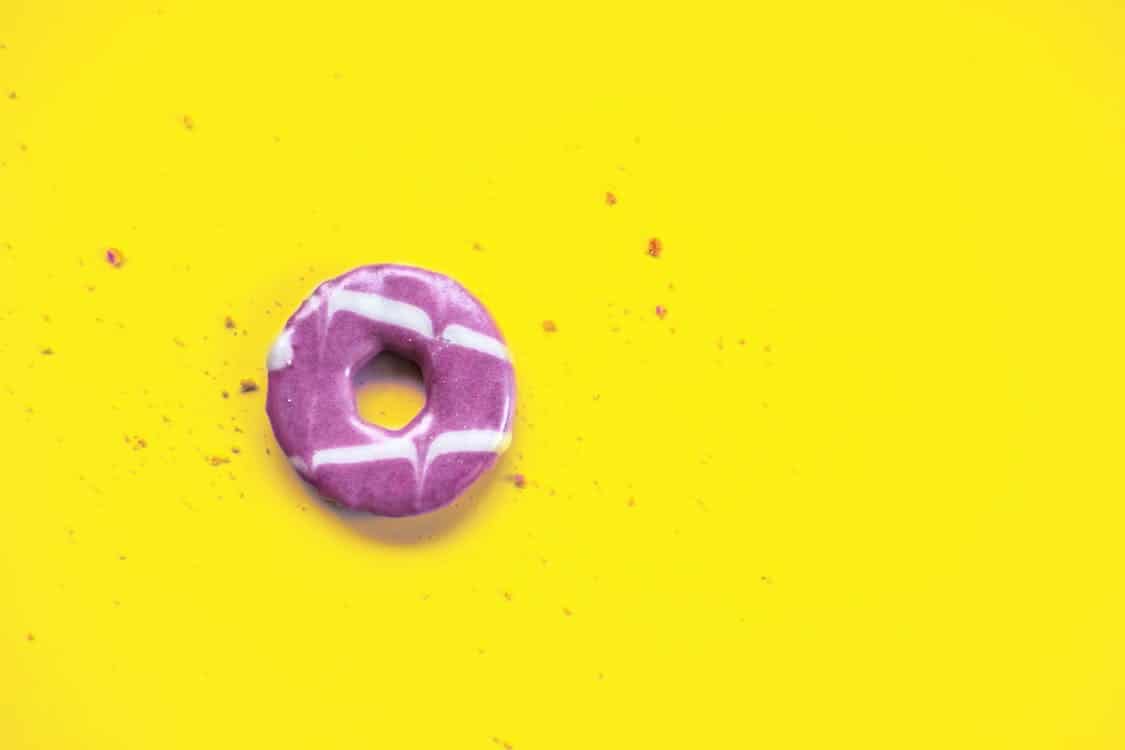“How do we educate kids on healthy eating?” is a question that’s come up a few times recently at events I’ve spoken at about eating disorder recovery.
It’s an awesome and valid question because of course we want our kids to eat healthy and grow up into healthy adults who also eat healthy.
That’s why it may be surprising to hear my short answer is “we don’t”.
At least not in the way of “nutrition education”.
The long answer is a little longer so first let me start with a story and then the 3 areas I suggest we focus on if we truly want our kids to eat well and become adults who eat well.
The Story

A few years ago, I worked with a woman who shared with me that her eating disorder began when she was in late primary school and received education on what eating disorders were.
The education was aimed at eating disorder prevention.
It was meant to do good.
It didn’t.
Being so young and impressionable out of curiosity she began to do some of the eating disorder behaviours that were mentioned in the education (even though they were mentioned as bad and don’t do).
Unluckily for her this morphed into her developing and living with an eating disorder well into her 40s.
My point is we cannot control the message people receive and no matter how good our intentions for delivering these educations (including nutrition education that is not specifically eating disorder related but we’ll get to this later) the people receiving the message won’t always get the message we intended.
Just like my client in this story.
So, what is the answer?
To stick our heads in the sand completely?
To pretend eating disorders don’t exist or that all ways of eating are good for our bodies?
I don’t think that is realistic or even useful either.
What I do think is useful is to look at the intention behind why we want to educate our kids to eat well in the first place?
We want them to be healthy.
We want them to be strong.
We want them to be happy.
We want them to thrive and live successful lives.
Therefore, I do have some ideas about how we may go about achieving the same intention (helping our kids eat well and grow up into adults who eat well, yes?) in different ways that are likely to be much more successful at achieving our intentions.
Beginning with…
- Be The Example
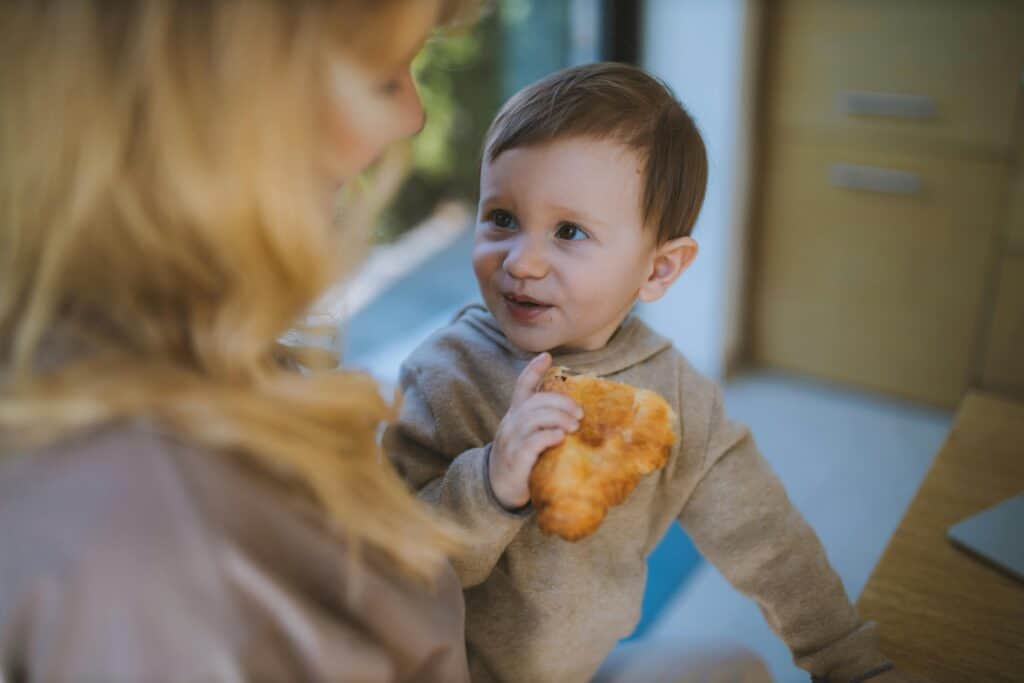
If you have any desire to help your kids create awesome healthy habits with food (or anything sle in life for that matter) it starts with you.
They see.
Even when you don’t think they see, they see.
This is the most important of all but also sadly the trickiest.
Sadly, because it should be the most simple.
It should be so simple that I don’t even have to list it.
It should just be.
We should all be so fortunate as to have a great relationship with and access to food.
But hey, life happens.
I don’t even like writing that because it’s such a blaze way of referring to what I actually mean when I say, “life happens”.
I am referring to such a broad array of things that get in the way of our being able to love, care and support ourselves optimally and that ranges from the mundane that we may be tired that day to being abused in childhood, growing up where we didn’t have any money, struggling to pay our bills today to having cancer.
Everything in life affects our ability to nourish ourselves.
Thus “life” gets in the way of us nourishing ourselves well and naturally providing that example to our kids.
Naturally providing that example is ideal.
But if you’re not there. If life happened to you and you know that you could do better with making meals for yourself, eating snacks and so on you’ve got time to learn.
Now is your time.
Because if you want your kid to grow up healthy and eating awesomely it isn’t going to happen when you send them off to school.
What you do is always going to be by far their biggest influence.
Besides, what “nutrition education” they receive at school will be flawed.
We’ve seen this time and time again.
The dietary advice given in the 70s, 80s, 90s and now are not the same.
We know more now but we sure still don’t know it all.
I’ve had parents bring material from school curriculums to sessions as they sit beside their child who is suffering immensely physically and mentally due to that well-meaning “nutrition education”.
And it is heartbreaking each and every time.
This was my story too.
I received nutrition education in early high school that without a shadow of a doubt contributed to my developing an eating disorder.
Contributed to something that is so unbelievable unfair to have had to experience I have no words.
If you are the example your child is going to trust you beyond what advice they get a school.
If you are the example they don’t need the nutrition education at school.
And I really do mean if you “are” the example not if you show or tell them what to do while you struggle to do it yourself.
They see.
They see the incongruencies even if they aren’t yet old enough to articulate it or even know what they are seeing.
They see.
If you really want to help my first advice is always going to be “sort your own stuff out”.
And what if you have a great relationship with food and you want to do more to influence your kid to have one also, what can you do then?…
2. Teach How to Build the Foundations of a Nourishing Meal
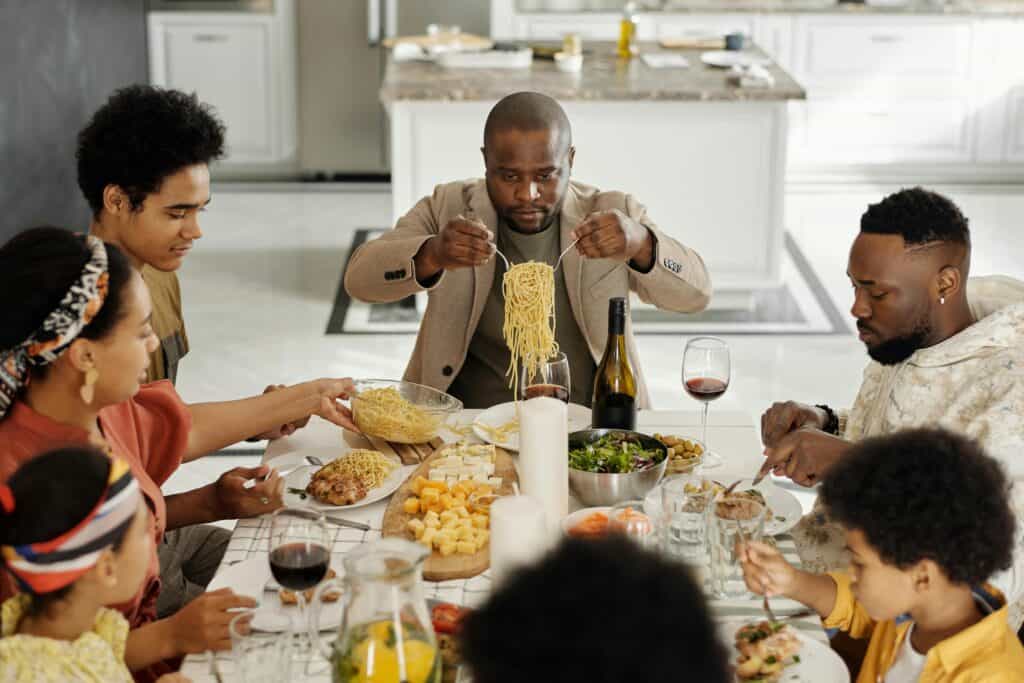
I have been a dietitian for almost 7yrs ears now.
In that time, I have met and worked with a lot of people.
I have learnt amazing things about the different ways people eat.
None more “right” or “wrong” than the other.
We are all just doing our best.
However, when it comes to meeting our bodies needs for energy and micronutrients (vitamins and minerals) it is true that we can eat in ways that do this or don’t do this, but it is also true that we can eat in ways that do this less optimally or do this more optimally.
You can probably appreciate that when I am working with my clients, I am not aiming to have them not meet their nutritional needs or juuuuust meet them.
No, I am aiming for optimal.
Optimal within the realms of reality and life that is.
What does this mean?
In practical terms the way we look at food is in 5 categories.
- Grains/Carbohydrates – this includes things like bread, rice, pasta, quinoa, wraps, bagels, polenta and cous cous.
- Meat/Meat alternatives/Proteins – this includes things like meat, chicken, fish, eggs, legumes, tofu and tempeh.
- Dairy/Dairy alternatives – this includes things like milk, cheese, yogurt and all the alternatives to these.
- Fruit – this includes things like pineapple, apple, banana, oranges, apricots, watermelon and so on.
- Vegetables – this includes things like spinach, pumpkin, mushrooms, onion, capsicum, tomato, cucumber and so on.
There is also another group of food that provides vital nutrients and that is Fats.
Fats are things like avocado, olive oil, nuts and seeds, butter, cream and mayonnaise.
Each of these 5 food groups plus fats (which should really just be included as a food group) in combination provide us with the nutrients our bodies need to function.
There is also of course what we call “fun foods” or foods that don’t necessarily fit nicely into one of these categories and what we might think of (depending on our own education and upbringing) as “bad” or “junk” foods. These foods include things like chips, ice-cream, chocolate, lollies and so on.
These foods cannot be ignored in the conversation around creating a balanced diet because for most people they are a part of life.
Perhaps nowhere more so then when we are kids. Therefore, we include them in the conversation, and we include them in our diet.
When we are looking at how to create a “balanced” meal we are looking at including sources from each of these food categories. Or as close to as possible as often in Western cultures we’re not always including a lot of vegetables at breakfast for example.
For example, a lunch may look like bread (grain), egg (protein), cheese (dairy), lettuce and tomato (vegetable), avocado and mayonnaise (fats) and a banana (fruit) and some potato chips and chocolate (fun foods).
As another example a dinner may look like rice (grain), fish (protein), feta cheese (dairy), broccoli, potato, sweet potato and tomato (vegetables) and after dinner some berries (fruit) and ice-cream (fun food).
In these examples you’ve ticked off 5 of the food groups. Plus, fats and fun foods.
What I’d love you to take away from this model is that it doesn’t require a high level of nutritional knowledge to utilise. I’d also love you to see that using this model there is a lot of room for movement in terms of preferences, budget and so on. That’s the most useful thing about it (besides helping us meet our nutritional needs that is). It is not a set meal plan or a “you must eat this and not eat that otherwise you are unhealthy”.
Instead, it offers flexibility.
It is incredibly versatile and adaptable.
All of which are important to overall health.
What you also might have noticed in the examples above is that I’ve left out the amounts of each food.
That is I didn’t say have 1 cup of pasta or 146g of fish.
I’ve done this on purpose.
While there are guidelines around how much of each food group we “should” be eating each day and that is valuable and useful the truth is that the amounts we need of each food group are vast and varied and depend on our individual needs. Kids and human beings do not need to learn the calories in foods. They certainly do not need to determine their intake of x, y or z food based on the calories it provides.
Hence the caveat is that this is a general guide and only a guide.
Your needs may differ.
Your child’s needs may differ.
Your needs may differ markedly!
Your child’s needs may differ markedly!
Honestly, if it is something you feel is important (and I would suggest it is) I would consider making time to see a dietitian.
Helping people eat in ways that best serve their bodies and long-term health is what we do.
3. Food Preparation and Storage Skills
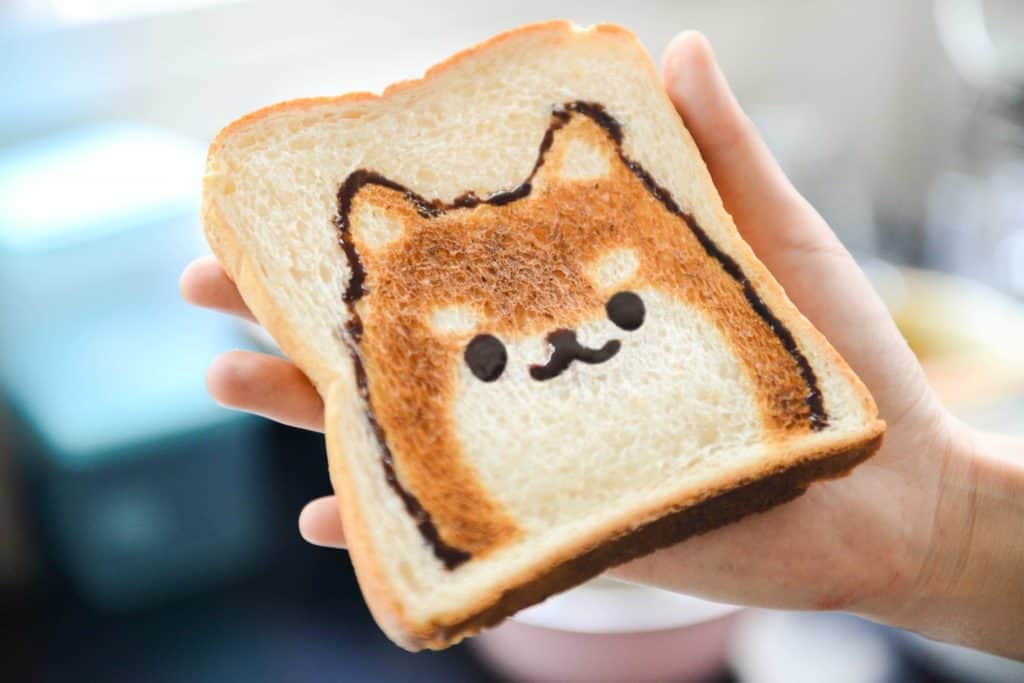
In summary kids don’t need to be told how to eat and how not to eat.
But that doesn’t mean there is nothing we can do to help.
There is plenty we can do.
The most important and impactful of which is getting ourselves sorted so we’re not unknowingly and unconsciously perpetuating our own food issues.
The next important component is providing them with food. Foods of all types from which they can choose. Showing and involving them in meal preparation appropriate to their age for example as a small child mixing the brownie batter and as a teenager putting together a “nutritionally sound plate” from the example given above.
Amongst all this it is important to remember that at end of the day food is a part of life.
It may be a very important and indeed vital part of life, but it is not life.
It is not life, and it is not all there is to health.
There are so many factors that affect our health outside of what we eat.
Even outside of what we have control over.
To focus on food at the detriment of other areas of our lives (such as playfulness, fulfilment, finances and connection) would be a grave mistake and we would be doing ourselves far more harm than good.
Be the example of what’s possible. Provide a neutral and empowering food environment and you’re going to be far more successful at achieving the intention of that child growing up into a healthy, happy adult with a great attitude towards food than any nutrition education they’ll receive in their life.
With my whole heart I hope you found this information useful and inspiring.
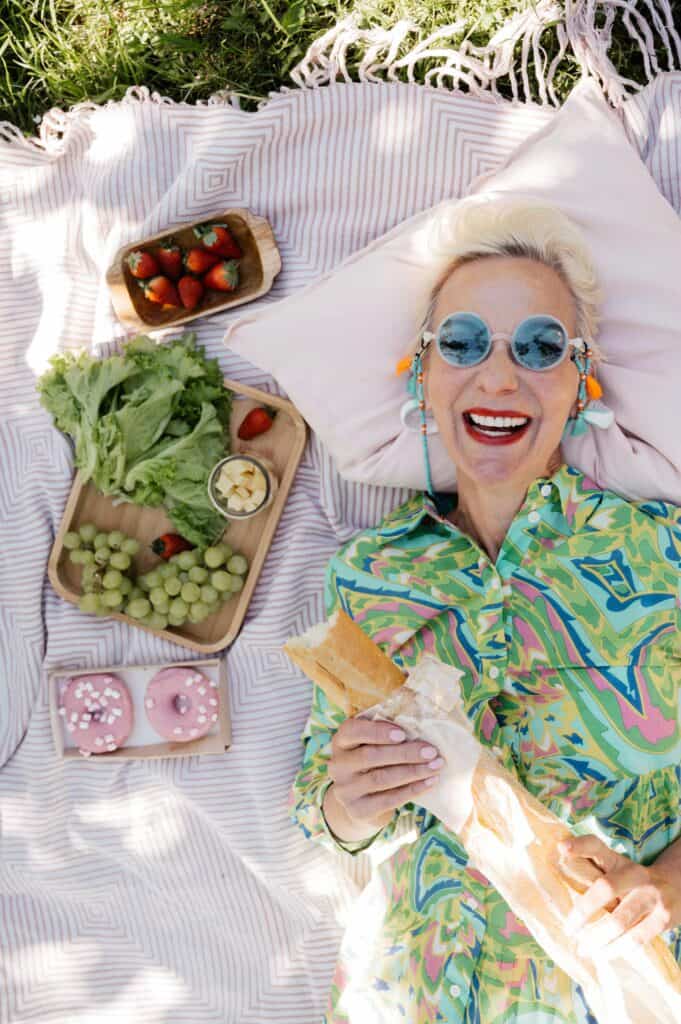
Become Great. Live Great.
Bonnie.



